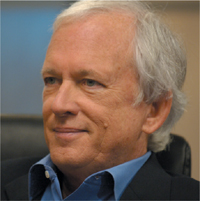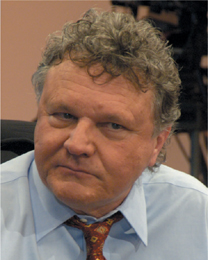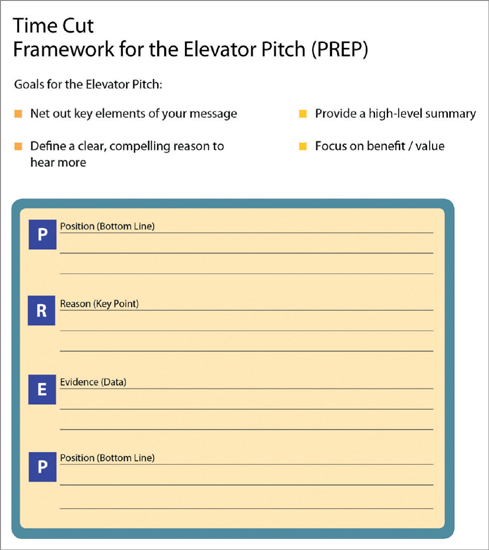CHAPTER
4
Time Cut:
A $30,000/Hour Investment
If after 30 minutes they’re on their third slide, they have no concept of time, and no respect for our time.
—Ned Barnholt
A lot is at stake when a presenter performs poorly in a top-level meeting. A valuable project may not get funding, a successful career can run off the tracks, and executives’ time can be wasted.
The productivity cost of poor meeting performance can be measured in dollars and cents. Lots of dollars and cents. If we consider the top five leaders of a mid-sized company (CEO, CFO, COO, CTO, CMO, etc), with, let’s say, $4 billion in revenue and calculate what it costs to put them into an hour-long meeting, the numbers are staggering. Their salaries, bonuses, stock options, and other perks can be determined from SEC public records. Our calculations indicate that having those five people in a decision meeting costs the shareholders more than $30,000 per hour! Assuming that this same group meets at least twice a week for hour-long meetings, the cost per year is $60,000/week × 52 weeks = $3.1M/year.
To make matters worse, CEOs report that the mean failure rate for the meetings they sit through is a whopping 67 percent. Almost 70 percent of these meetings are total failures! The cost of bad meetings to the shareholders is a cool $2.1 million, year in and year out ($3.1M × .67 failure rate). No wonder the pressure is so high to avoid wasting these executives’ time.
According to Mike Lyons, corporate boards operate under a tenet called duty of care, that is, the board is charged with watching out for the shareholders’ interests. You could assume that if a board knew the huge cost of poor presentations in front of the C-level, they would be expected to take action. Such losses could make the cost of your run-of-the-mill employee or shareholder lawsuit pale in comparison.

Mike Lyons
Flexibility
With so much at stake, you have to prepare for any and all contingencies. That means you have to be adaptable. You will crash and burn if you stick to your carefully rehearsed script and fail to appreciate the executives’ concerns which span the entire business and can change moment to moment. They may be worried about what happened in finance, manufacturing, or quality assurance only minutes before you arrived.
Recall my presentation to Dick Anderson from Chapter 1. My meeting would have gone better that day had I been aware of his larger concerns. Demonstrating to C-level executives that you appreciate the scope of their responsibilities and that you can modify your presentation on the fly goes a long way toward helping you succeed.

Harold Fethe
As Harold Fethe, cautioned, “This group has to get tremendous decision volume through their meeting time together. They have horrendous travel schedules. The luxury of being together for meetings is a daily, weekly, tense reality for these folks. You need to respect that and get up to that level of urgency.”
As you walk into that room, be aware of the cost of the executives’ time, the breadth of their concerns, and their expectations that a presenter will meet their shifting needs. Oracle VP Markus Zirn advises, “You have to literally throw out everything you learned from traditional presentation training. It’s not about making a speech that educates, persuades, inspires, or leads. It’s about raw decision making.”
As we consider our first challenge, “Time Cut,” you’ll see that Todd Lutwak, Vice President, eBay, wasn’t thinking about any of this. He was just focused on getting through the slide deck that had taken days to create. That mistake cost him dearly.

Todd Lutwak
Time Cut:
“I failed at the 99 yard line.”
With an MBA from Northwestern University’s Kellogg School of Management, Todd Lutwak’s career in marketing has spanned 20 years.
When Todd walked into our senior-level meeting, he wanted approval for a new policy for the eBay seller community. He looked confident as he launched into the history of the program, but the executives immediately got restless. One executive didn’t hide his frustration, “Todd, where are we going with this? What do we need to get done here? We’ve only got five minutes so let’s get to the bottom line.”
Oblivious, Todd responded, “I have seven slides we can get through. My team worked really hard on them and one of them has great visuals. You’re going to love this slide.” Exasperated, the executive got even more adamant, “Todd, what do you want from us here? Do you want us to give you a decision at the end of these seven slides?”
Todd continued to push his slide agenda. Bad move. “Why don’t you give us the conclusions and we’ll take a look at them?” a second executive said. “I don’t understand the problem yet,” complained a third executive.
Todd tried to punt by providing a little back story. The reprimand was sharp, “This is still strict chronology. Go to the problem and then peel it back if there’s any time left.” Unfortunately, Todd was already out of time. Having had enough, one executive announced that he had another meeting and abruptly left.
Todd envisions a legacy in which the people who worked for him over the years have fulfilling careers, and grow and evolve as people. As their boss, however, not delivering means that he’s compromising their careers as well as his own.
Afterwards, Todd reflected on what went wrong, “When I got cut off, I felt it was a personal rejection. I wanted to go through my slides methodically: page one, page two, etc. They stopped me cold. The goal was to get the project approved. But I didn’t get the message across in the time that was allotted, which has implications for me and my team down the road. It was as if my team got the ball down to the 99 yard line, and I failed to get it across the goal line.”

Executive Advice
If you have half an hour on the agenda, plan on a 10 to 15 minute presentation. You’re not going to get through it all because we’re not going to let you. Remember, it’s our meeting.
—Dan Warmenhoven
Dispense with the slides and talk to us. Is there a decision you want from us?
—Dan Eilers
You should know before you walk in the door—if I can only present three slides, which ones would they be?
—Ginger Graham
By not anticipating questions and discussion, Todd showed he was simply not ready. When told he had a fraction of the time that he’d planned on, Todd should have adjusted his presentation immediately. He should have had one presentation for the length of time he had originally been given, and another five-minute presentation that spelled out the bottom line, why it was needed, the cost advantage, and the return on investment.
Todd’s most important task was to be clear about what he wanted from the group and then respond to their concerns. When they got antsy about the timing, he should have let go of his script, and gone directly to his elevator pitch (see following page). That would have addressed the executives’ concerns about timing.
Elevator Pitch
A board member will often ask, “What’s the elevator pitch?” If you can’t reduce your strategy or proposition down to a few sentences that can be described in an elevator going just ten floors, then you probably don’t have a central message that is succinct and compelling.
—Greg Ballard
Be prepared with an elevator pitch for every presentation you make. Use the PREP structure:
• (P) Position (bottom line)
One sentence statement explaining what you want and the Return On Investment (ROI).
• (R) Reason
Short explanation of why your bottom line is important to the company.
• (E) Evidence
Example or one piece of evidence supporting your case.
• (P) Position (bottom line)
Repetition of what you want.
No Pages at All
After getting executive advice, Todd realized he needed to be more flexible and able to make changes on the spot in response to their time constraints. Next time through, that’s just what he did. At the executives’ request, he got to the point, wrapped up, asked for the order and got it. The meeting then proceeded to the next item on the agenda.
He reflected, “The second time I went in, I was prepared for a 1-minute presentation, a 10-minute presentation, and 4-minute presentation, whatever. I could have gone to page one, page seven, page two, or no pages at all. I was ready for whatever happened.”
Being prepared with options is critical. Because Todd was ready with his elevator pitch, and could cut as necessary, he got what he wanted despite having his presentation time slashed once again.
Summary
To avoid the traps of the Time Cut:
• Expect to get your time cut
• Know your goals for the meeting and your bottom line
• Come prepared with a much shorter version of your presentation
• Be prepared with an elevator pitch
• Choose three slides that will deliver your message
• Be ready to let go of your rehearsed script and go immediately to your bottom line

